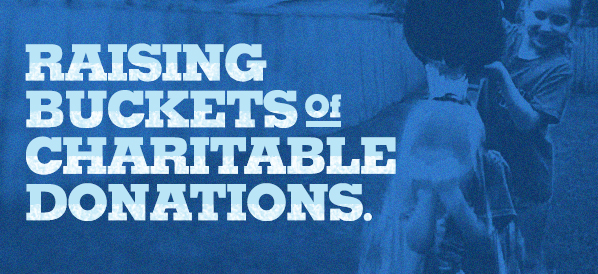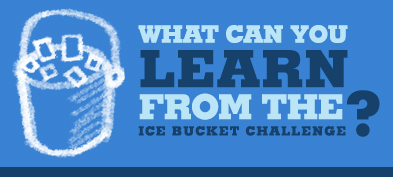A month ago, most people had only a vague recognition of amyotrophic lateral sclerosis, or ALS. It’s commonly known as Lou Gehrig’s disease, although the famous New York Yankee first baseman who contracted this disease died in 1941.
What a difference a few buckets of ice-cold water over the head makes! And by “a few” we mean thousands and thousands and thousands of buckets.
If you are unaware of the “ice-bucket challenge,” congratulations — you are officially off the grid. And how is life in the cave? For the rest of mankind, this challenge has become the most prevalent, persistent, peculiar, publicity platform in perpetuity.
How Did This Happen?
This social media juggernaut started innocently enough. Former Boston College baseball player, Pete Frates, created the challenge with his family in an effort to spread awareness of ALS, a disease that he has lived with since 2012. The challenge consists of people dropping buckets of icy water over themselves, recording it, sharing the experience on social media, and then nominating others to do the same. Challenge participants are also encouraged to make a donation to ALS research.
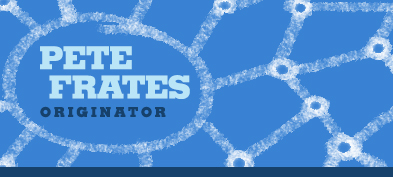 That’s how it started. However, understanding the momentum it has picked up in a very short time has non-profit organizations’ leaders, marketing mavens, social media experts and even Joe Six Pack (whose beer is now warm because he dumped the ice-chest over his head) wondering how this happened. The number of participants who have taken the challenge is almost impossible to calculate, but the financial benefit to the ALS Association in terms of cold, hard cash is staggering.
That’s how it started. However, understanding the momentum it has picked up in a very short time has non-profit organizations’ leaders, marketing mavens, social media experts and even Joe Six Pack (whose beer is now warm because he dumped the ice-chest over his head) wondering how this happened. The number of participants who have taken the challenge is almost impossible to calculate, but the financial benefit to the ALS Association in terms of cold, hard cash is staggering.
According to the Wall Street Journal, “the non-profit has raised $15.6 million in donations between July 29 and August 18, compared with $1.8 million during the same period last year. Meanwhile, ALS Therapy Development Institute, a non-profit biotechnical organization said it has raised $550,000 since August 3, compared to about $110,000 during the same period last year.” Even the smaller, more local ALS groups such as the New York City-based Project ALS has raised $116,000 over the past two weeks compared to just $1,000 they raised all of last year.
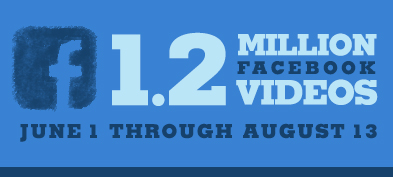 Awareness of the disease among the billions of social media users is also sky-high. According to the New York Times, “People have shared more than 1.2 million videos on Facebook between June 1 and Aug. 13 and mentioned the phenomenon more than 2.2 million times on Twitter since July 29.”
Awareness of the disease among the billions of social media users is also sky-high. According to the New York Times, “People have shared more than 1.2 million videos on Facebook between June 1 and Aug. 13 and mentioned the phenomenon more than 2.2 million times on Twitter since July 29.”
When this much money is raised and this much publicity generated by something as silly as dumping cold water over one’s head and then posting this event on Facebook, it begs an obvious question.
Why Did This Work?
As you’re reading this post, there’s a good possibility that somewhere a meeting is going on in some non-profit organization boardroom where the director and staff are trying to replicate the perfect storm success of this viral campaign. There are as many theories about the secret sauce of this ice-bucket challenge as there are social media consultants sipping skinny lattes in Starbucks.
If you’re involved with a non-profit organization, what can you learn from the ice-bucket challenge? There are a few general lessons to be learned. The challenge seems to have worked because it really touched people, it was fun in a watching-someone-slip-on-a-banana-peel kind of way, it was easy to participate and the almost universal penetration of social media offered a convenient medium which everyone loves to feed.
Other take-aways from the ice-bucket challenge include:
(1) The call to action (dump a bucket of ice, cold water on your head) was simple and direct and it clearly worked.
(2) Social media phenomena such as this rely on the power of exponential reiteration. In other words, when someone met the challenge, they challenged others, who challenged others. The bigger the social network, the more powerful the meme.
(3) Instead of being a doofus who is getting water dumped on his head, this challenge allowed the participant to be a kind of “hero” who is telling their story to the rest of us and sacrificing his image for a greater good.
(4) Experiential marketing works because it involves participation, and action speaks louder than words. This challenge succeeded because participants became a part of the Pete Frates story of suffering from ALS.
(5) Technology, such as the use of hashtags like #IceBucketChallenge and #StrikeOutALS, allows this content to be efficiently curated and easily shared on social media.
(6) The ice-bucket challenge was simple, outrageous and therefore easily remembered, so it is more likely to be contagious.
Narcissism Masked as Altruism
When a social phenomenon becomes as all-pervasive as the ice-bucket challenge has, the naysayers are always ready to rain on the wet heads of challengers. Such is the case with Arielle Pardes writing in online magazine Vice.
“There are a lot of things wrong with the Ice-Bucket Challenge, but the most annoying is that it’s basically narcissism masked as altruism. By the time the summer heat cools off and ice-water no longer feels refreshing, people will have completely forgotten about ALS. It’s trendy to pretend that we care, but eventually, those trends fade away.”
Don’t sugar-coat it Arielle. How do you really feel?
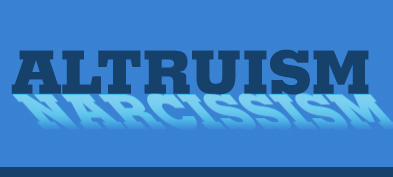 “This is the crux of millennial ‘hashtag activism,’ where instead of actually doing something, you can just pretend like you’re doing something by posting things all over your Facebook. Like the Ice-Bucket Challenge, good causes end up being a collective of social media navel gazing. We reflected on our favorite social-movements-gone-viral and found out what happened to them after they fell off our Twitter feeds. Because, yes, social problems continue even after you stop hash-tagging them.”
“This is the crux of millennial ‘hashtag activism,’ where instead of actually doing something, you can just pretend like you’re doing something by posting things all over your Facebook. Like the Ice-Bucket Challenge, good causes end up being a collective of social media navel gazing. We reflected on our favorite social-movements-gone-viral and found out what happened to them after they fell off our Twitter feeds. Because, yes, social problems continue even after you stop hash-tagging them.”
Of course, there is much truth in this analysis. All of the famous people, high-tech swashbucklers, professional athletes, actors and even the poor schlemiels like you and me have egos and we like having people see our Facebook page and giving us big, juicy, heart-felt LIKEs for the many clever, funny (and, yes) altruistic things we say and do. It’s only human.
However, if the trade-off for this narcissism is huge sums of money raised and off-the-charts awareness for a fatal disease, bring me a bucket of ice-water and a video camera.


